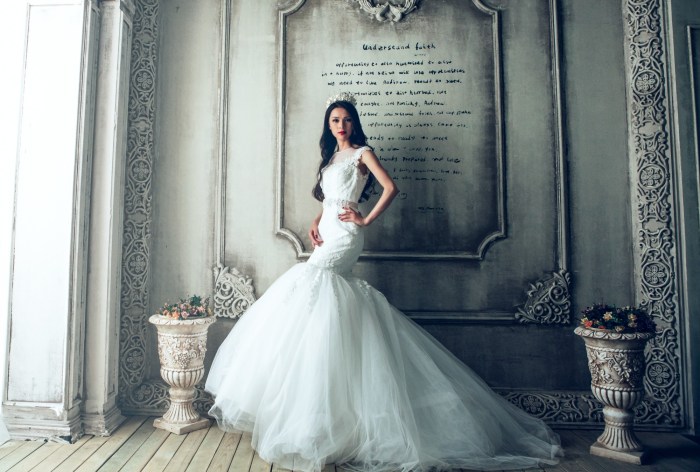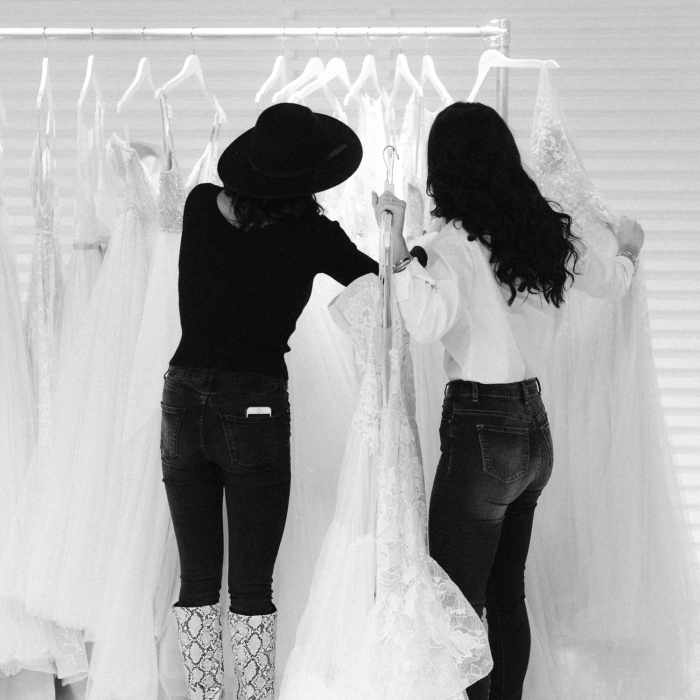Typical Wedding Dress Price A Comprehensive Guide
Average Wedding Dress Prices
Typical wedding dress price – The cost of a wedding dress is a significant factor in many brides’ budgets. Prices vary dramatically depending on several factors, including style, designer, fabric, and retailer. This article provides a comprehensive overview of average wedding dress costs, helping you navigate the complexities of wedding dress shopping and make informed decisions.
Average Wedding Dress Costs Across Styles

Source: captaincash.ca
Wedding dress prices vary significantly based on style. Ballgowns, with their full skirts and intricate details, typically command higher prices than simpler styles like sheath dresses. Fabric quality, embellishments, and designer brands also heavily influence the cost.
| Dress Style | Average Price Range (USD) | Factors Influencing Price | Examples |
|---|---|---|---|
| Ballgown | $1,500 – $5,000+ | Intricate beading, high-quality fabrics (silk, satin), designer brand | Vera Wang ballgown, custom-made ballgown with heavy embroidery |
| A-Line | $800 – $3,000 | Fabric choice (lace, tulle, satin), embellishments (lace appliqués, beading) | Maggie Sottero A-line gown, simple A-line gown in crepe fabric |
| Sheath | $500 – $2,000 | Fabric (crepe, jersey), simplicity of design | Simple crepe sheath dress, sheath dress with minimal lace detailing |
| Mermaid | $1,200 – $4,000+ | Form-fitting silhouette, often features intricate beading or lace | Pronovias mermaid gown, custom-made mermaid gown with detailed embroidery |
Budget-friendly options often prioritize simpler designs and less expensive fabrics, while luxury dresses utilize high-end materials and intricate detailing, resulting in significantly higher prices.
Price Variations by Dress Silhouette
The silhouette of a wedding dress significantly impacts its price. Mermaid gowns, with their form-fitting bodice and flared skirt, tend to be more expensive due to the complex construction. Simpler styles like empire waist dresses are generally more affordable.
- Mermaid: Often features intricate beading or lace, leading to higher costs. Example: A mermaid gown with elaborate lace detailing.
- Empire Waist: Typically more affordable due to simpler construction. Example: A flowing empire waist gown in chiffon.
- Tea-Length: A more casual style, often less expensive than floor-length gowns. Example: A tea-length lace dress.
Lace, beading, and embroidery add significant cost, with heavily embellished dresses commanding much higher prices than those with minimal detailing.
| Dress Style | Silk | Satin | Tulle |
|---|---|---|---|
| A-Line | $1,200 – $2,500 | $900 – $2,000 | $800 – $1,800 |
| Ballgown | $1,800 – $4,000+ | $1,500 – $3,500 | $1,200 – $3,000 |
| Sheath | $700 – $1,500 | $600 – $1,200 | $500 – $1,000 |
Geographic Location and Pricing
Geographic location plays a role in wedding dress pricing. Areas with higher labor costs and stronger economies tend to have higher average prices.
A hypothetical map would show a gradient of colors, with darker shades representing higher average prices and lighter shades representing lower prices. For example, major metropolitan areas on the coasts might be depicted in darker shades, while more rural areas in the Midwest might be lighter.
| Region | Average Price Range (USD) | Contributing Factors | Examples of Dress Costs |
|---|---|---|---|
| Major Metropolitan Areas (e.g., New York City, Los Angeles) | $1,500 – $5,000+ | High labor costs, high demand, concentration of designer boutiques | High-end designer gowns, custom-made dresses |
| Smaller Cities/Rural Areas | $800 – $2,500 | Lower labor costs, lower demand | More affordable bridal shops, simpler dress styles |
| International Locations | Variable | Currency exchange rates, import/export costs, local labor costs | Significant price differences depending on the country and region |
The Impact of Retailer Type

Source: brides.com
Different retailer types offer varying price points and services. Bridal boutiques often carry higher-end dresses with personalized service, while department stores provide a wider selection at more moderate prices. Online retailers offer the broadest selection and often the lowest prices, but lack the in-person experience.
- Bridal Boutiques: Pros: personalized service, high-quality dresses; Cons: higher prices, limited selection.
- Department Stores: Pros: wider selection, moderate prices; Cons: less personalized service.
- Online Retailers: Pros: widest selection, often lowest prices; Cons: lack of in-person experience, potential for sizing issues.
| Retailer Type | Average Price Range (USD) | Selection Variety | Customer Service |
|---|---|---|---|
| Bridal Boutiques | $1,200 – $4,000+ | Limited but curated | High, personalized service |
| Department Stores | $800 – $3,000 | Wide | Moderate |
| Online Retailers | $500 – $2,500 | Very wide | Variable, often limited |
Additional Costs Beyond the Dress, Typical wedding dress price
Beyond the dress itself, several additional costs contribute to the overall expense. These costs can significantly impact the budget if not carefully considered.
- Alterations: $100 – $500+
- Veil: $50 – $500+
- Shoes: $50 – $300+
- Jewelry: $50 – $1,000+
- Cleaning/Preservation: $75 – $300+
Careful budgeting and prioritizing expenses can help minimize these additional costs. For example, opting for simpler accessories or DIY projects can reduce overall expenditure.
Factors Affecting Dress Price: Fabric & Detailing
The fabric and level of detailing significantly influence a wedding dress’s price. Luxurious fabrics like silk and intricate embellishments increase the cost substantially.
| Fabric | Average Price Impact |
|---|---|
| Silk | High: Adds significant cost due to its luxurious feel and drape. |
| Satin | Moderate: A relatively affordable option that offers a sleek finish. |
| Lace | Variable: Can range from affordable to very expensive, depending on the type and intricacy of the lace. |
| Tulle | Low to Moderate: An affordable option, often used for volume and texture. |
Beading, embroidery, and appliqués add significant cost, with the level of intricacy directly correlating to the final price. Highly skilled craftsmanship also contributes to the overall cost of the dress.
Questions Often Asked: Typical Wedding Dress Price
What is the average cost of alterations?
Alteration costs typically range from $100 to $500, depending on the extent of the adjustments needed.
Can I return a wedding dress if I change my mind?
Return policies vary greatly by retailer. Check the store’s policy carefully before purchasing.
How long does it typically take to order and receive a wedding dress?
Lead times can range from a few weeks to several months, depending on the designer, retailer, and customizations.
Are there financing options available for wedding dresses?
Some bridal boutiques and retailers offer financing plans; inquire directly with the store.



















